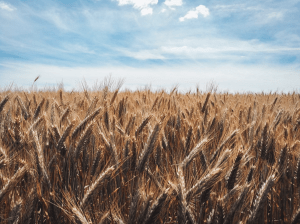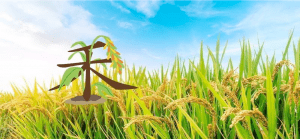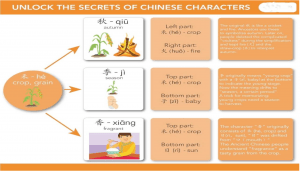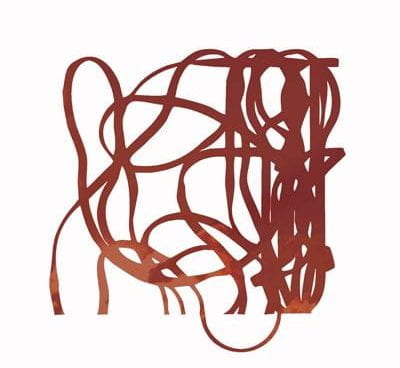
Chinese characters are one of the most important elements of the Chinese language and have evolved with the development of Chinese culture. They are embedded in multiple aspects of Chinese culture and are still shaping thinking today.
As a Mandarin lecturer, I personally encourage every Chinese learner to practice characters as much as possible as nowadays we are losing more and more of our connections with our ancestors and history. Try to seize any chance you may get to learn more about this fascinating ancient writing system.
Today, I will briefly introduce you to the beautiful character of 禾 (hé). This a very simple character but is also very commonly used as a component in many complicated characters.
禾 means crop and grain; the shape of the character is somewhat like a rice crop bending heavily in the wind. Can you see it too?

Now, let’s take a look at some characters containing 禾:秋, 季, 香 (qiū, jì, xiāng).
秋 (qiū) is made up of 禾 on the left and 火 (huǒ) on the right. In the original character, the top radical signified crickets whilst the bottom radical signified fire. People would hear crickets chirp a lot when autumn came around whilst the fire described the farmers burning straw after harvesting to prevent pests.
Thus, our ancestors took crickets and fire, these two most typical items, to symbolise the season of autumn. Later, as Chinese characters developed, the complicated cricket radical was omitted and only the radicals for fire (火) and straw/crop (禾) were left to represent autumn.
季 ( jì) contains the radicals 禾 at the top and 子 (zǐ) at the bottom with 禾 and 子 signifying an infant or baby. 季 originally meant young crop with a 子 written at the bottom to indicate a young stage. Now the meaning of 季 has evolved to mean season or a certain period, but there is still a connection between young crops and seasons, isn’t there? Here’s a trick for helping to memorise the character of 季, just think of the fact that young crops need a season to harvest!
香 (xiāng) means fragrance or fragrant and today it is composed of the radicals 禾 at the top and 日 ( rì ), meaning sun, at the bottom. However, in ancient times the character originally contained the symbol for mouth 口(kǒu)at the bottom, which then later changed to the radical for sweetness 甘 (gān). Thus, ancient Chinese people understood something fragrant to be a sweet or tasty grain from the crops.
It was only in recent times that the radical for sun 日 replaced the radical 甘 for sweetness, however, I still prefer to interpret 香 as 禾 (crops) + 日 (the sun) to depict the sun shining over croplands. Imagine you are standing a field of crops in the sunshine. What you can smell, wouldn’t you say it is the definition of 香?

That’s the 禾 story in Chinese characters! Did you find it intriguing?
Chinese characters are a magical window that allow us to see our ancestors’ world and how it has developed over thousands of years into the modern society that we know today. Through all the evolutions and simplifications of Chinese characters we can see how thinking has changed and yet how certain things remain constant despite the passing of time.
Thanks to Chinese characters, we are still able to catch a glimpse of the landscape that our ancestors saw; we are able to understand the thinking – be it trivial or grand – behind each and every character.

Jianmei acquired the National Certificate for Teachers issued by Hanban Headquarters in China. She previously worked in Jiangxi University of Traditional Chinese Medicine researching TCM translation and teaching methods. She has also previously worked in South Korean teaching Chinese as a foreign language. She currently oversees several undergraduate Mandarin modules here at Goldsmiths Confucius Institute as well as our Lower-Intermediate and Intermediate Mandarin short courses for members of the local community.
